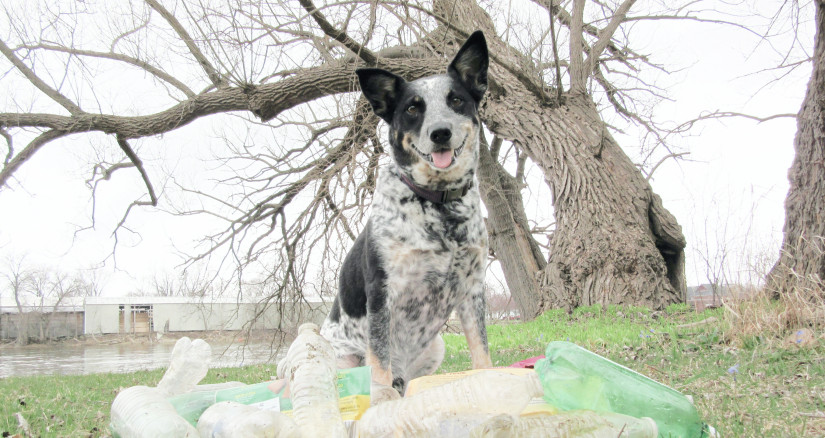
Sustainability In the Pet Sector
Pet care is, by nature, a high carbon footprint industry. From the challenges of creating durable toys that dogs can’t destroy in five minutes to creating healthy, protein-rich diets for the felines. As a society, there is an increased demand for more out of pet food products than for most other foods, which increases the requirements for the pet food industry to match human quality standards. Consumers desire the same freshness without compromising on convenience. They desire natural, sustainable, and long-lasting. These conflicting desires push the limits of the current ingredients, manufacturing processes, and packaging.1
Kibble and treat bags
Let’s look at the kibble and treat bags as a case study. These bags keep oil-rich products fresh for multiple years and stable after opening. In addition, bags are expected to be durable enough to be dropped on the floor without bursting and have clear windows to attract consumers. To achieve this, multiple layers of different kinds of plastics are combined to achieve the desired attributes. Some pet food bags can have seven or more layers of various plastics. Unfortunately, this multilayer approach creates plastic packaging that is difficult to recycle. There are some innovative solutions to this recycling issue coming to the market. Still, they are often more expensive than the current options and, therefore, less desirable. These solutions include recyclable single plastic packaging (mono-polymer packaging), incorporating more recycled content, and reducing packaging by shrinking the bag size.2
One may ask, why do products need a two-year shelf life? This is a complex question. Product shelf-life targets depend on volume requirements, regional demand variation, ingredient availability, consumer purchasing habits, waste, shipping time, and production interruptions, to name a few. In short, the longer the shelf life is, the more efficient it is for companies. This is often where companies turn to the packaging. Packaging acts as a barrier blocking oxygen, ultraviolet radiation, and water vapor. Each of these can dramatically impact a product’s shelf life. An at-home example is vacuum-packed meat in the freezer versus meat stored in a sandwich bag. The vacuum’s better vapor and oxygen barrier slows the establishment of freezer burn, thereby making the product last longer.
Another complicating factor in the packaging solution search is bag size. Many owners, especially of larger breed dogs, prefer to purchase their pets’ food in larger bulk bags. These bulk bags put increased requirements on the packaging because as the contents get heavier, the likelihood of the bag bursting when dropped increases.3 On the other hand, smaller bags use more plastic than larger bags per unit of food. Is it better to use more plastic that is easier to recycle or less plastic that isn’t? Fortunately, mono-polymer plastics that are sturdy enough to handle these heavier weights are on the way.1
Recyclability
Another roadblock in the path to more sustainable packaging is recycling itself. In the United States, recycling is driven by several factors, such as the demand for post-consumer products, ease of recycling, cleaning, and ease of sorting. Plastics that do not match even one of these aspects are sent to the landfill or cause the facility to shut down completely. Recyclers must be able to turn a profit from recycling. This is easy for paper products with plenty of demand for post-consumer paper. This is more difficult for glass, where the post-consumer market is shrinking by the day. Plastic is another burden entirely with many different types of plastics, each with its processing, cleanliness, and post-consumer demands.4 Fortunately, active projects are dedicated to making this recycling easier, such as the how-to recycle labels, which clearly state what to do with each type of plastic rather than just giving it a number. There are also ongoing endeavors to make recycling multi-layer plastic packaging more recyclable.
Demand for recycled plastic products
These solutions, however, do not address one of the most significant issues with plastic recycling. Demand. Recycled plastics are not equivalent to their original product form. They are often mixed colors and perform less optimally. They are usually less chemically, thermally, and impact stable. This means the incorporation of recycled plastics into new products may affect that product’s quality. Because of this, most recycled plastics are funneled into fabrics or rigid structures such as makeup containers, decking, outdoor furniture, and plant holders rather than soft packaging.
Interestingly, most of these issues are not from the plastic itself but contamination. This can be in the form of outside materials or other plastic types. On the flip side of this coin, some plastics function better than their virgin counterparts post recycling. Other plastics work just as well as the original plastics in different applications such as polyethylene which gets more flexible post recycling, making it useful for shrink-wrap or plastic food wrap.1
Packaging can easily be overlooked when developing a new product line or planning a path to sustainability. However, there are many opportunities for making an impact wrapped up in how a product is wrapped.
References:
- Pet Sustainability Coalition, Unpacked 22, in Unpacked 22,2022.
- Gale, A. 2021. Sustainable pet food packaging collaboration addresses challenges in the pet industry.
- GDV, "Container Handbook 2 causes of damage/loss during transport," container handbook & Gesamtverband der Deutschen Versicherungswirtschaft.
- C. Wolberg, "The Performance of Recycled Plastics vs Virgin Plastics," Oceanworks. https://oceanworks.co/blogs/ocean-plastic-news/the-performance-of-recycled-vs-virgin-plastics.
Follow us on LinkedIn for the latest updates on all things happening here at BSM Partners.
About the Author
Irene Lambregts formerly served as Assistant Manager of Technical Sales at BSM Partners. Originally from Idaho, her childhood was full of caring for and learning from the pets in her and her friends’ lives. Irene has a master’s degree in animal science.
This content is the property of BSM Partners. Reproduction or retransmission or repurposing of any portion of this content is expressly prohibited without the approval of BSM Partners and is governed by the terms and conditions explained here.